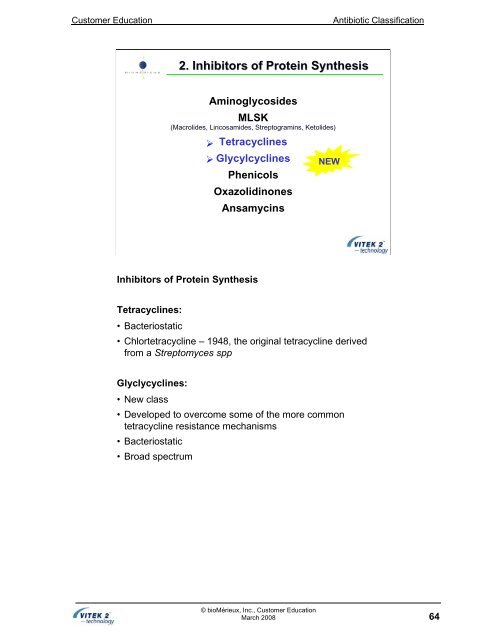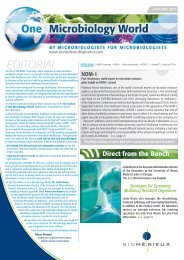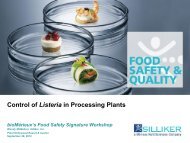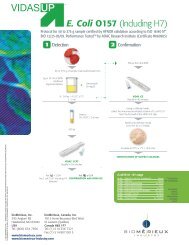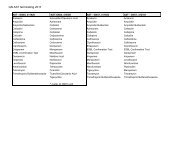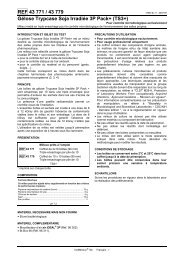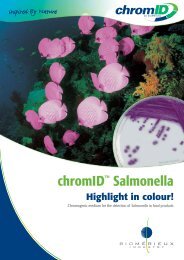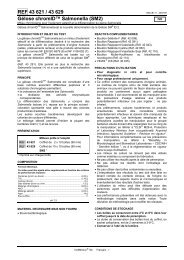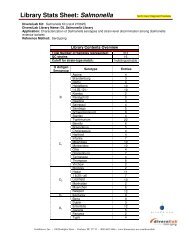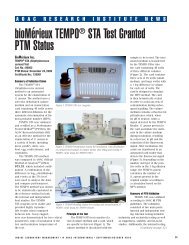Antibiotic Classification and Modes of Action - bioMerieux
Antibiotic Classification and Modes of Action - bioMerieux
Antibiotic Classification and Modes of Action - bioMerieux
You also want an ePaper? Increase the reach of your titles
YUMPU automatically turns print PDFs into web optimized ePapers that Google loves.
Customer Education <strong>Antibiotic</strong> <strong>Classification</strong><br />
2. Inhibitors <strong>of</strong> Protein Synthesis<br />
Aminoglycosides<br />
MLSK<br />
(Macrolides, Lincosamides, Streptogramins, Ketolides)<br />
Inhibitors <strong>of</strong> Protein Synthesis<br />
� Tetracyclines<br />
� Glycylcyclines NEW<br />
Phenicols<br />
Oxazolidinones<br />
Ansamycins<br />
Tetracyclines:<br />
• Bacteriostatic<br />
• Chlortetracycline – 1948, the original tetracycline derived<br />
from a Streptomyces spp<br />
Glyclycyclines:<br />
• New class<br />
• Developed to overcome some <strong>of</strong> the more common<br />
tetracycline resistance mechanisms<br />
• Bacteriostatic<br />
• Broad spectrum<br />
© bioMérieux, Inc., Customer Education<br />
March 2008<br />
64


